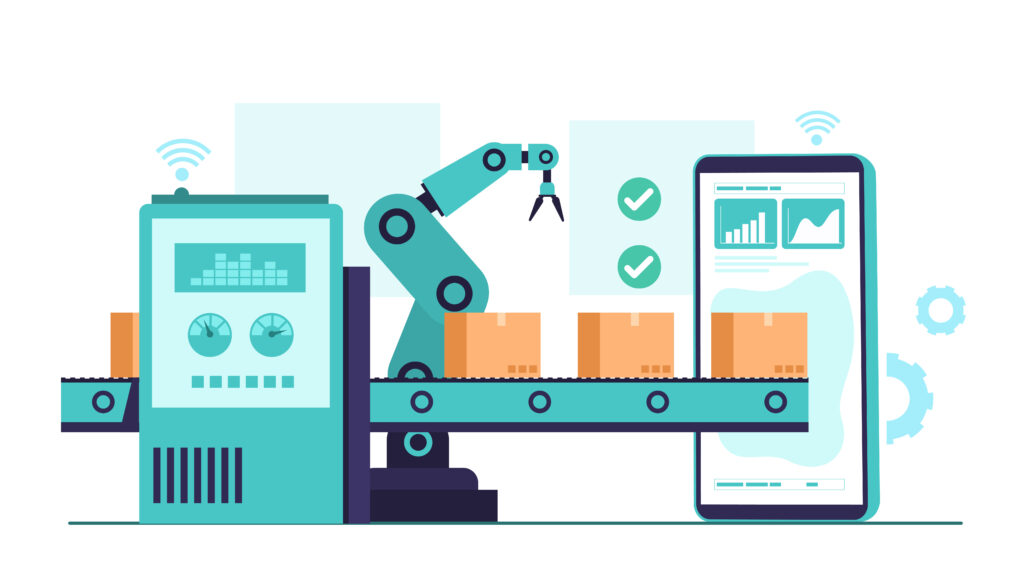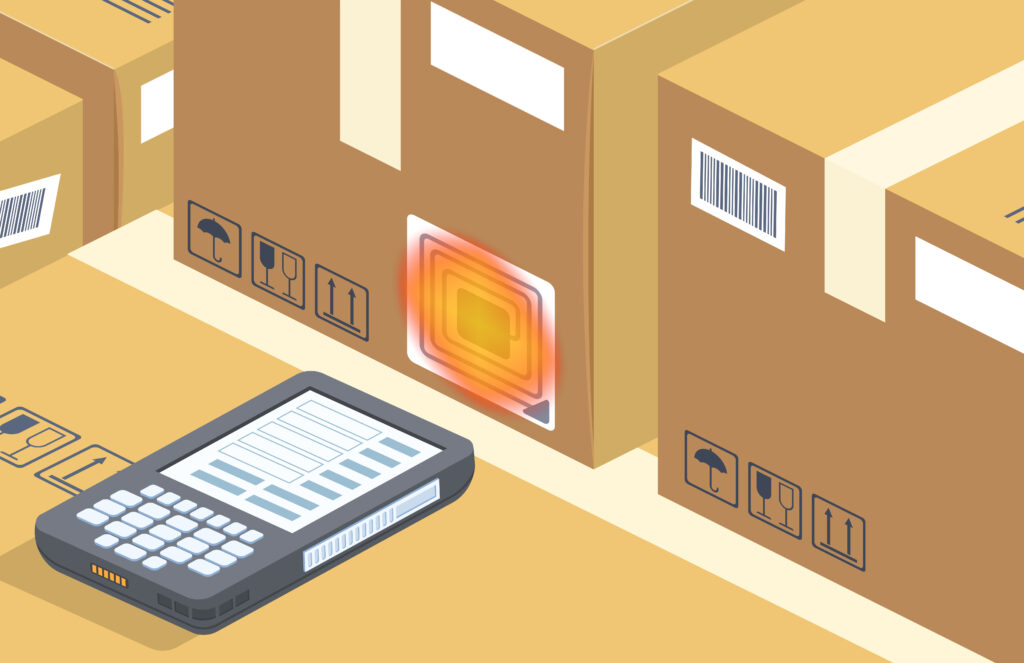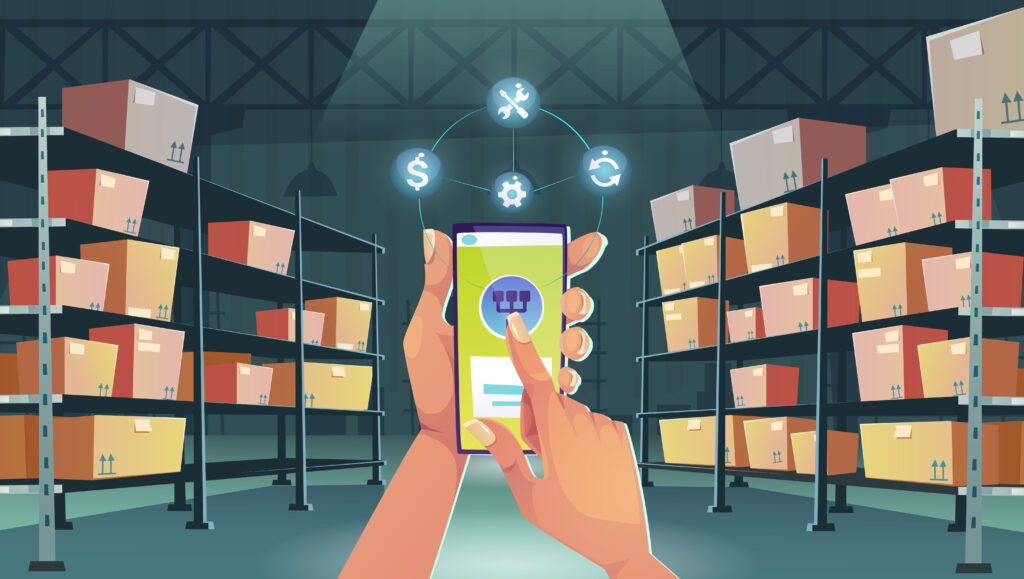In 2025, warehousing is at an inflection point. Industry leaders, such as Blue Yonder, SAP, and Oracle, are investing in automation, optimizing space, and digitizing operations. A recent study estimates that the market for Artificial Intelligence in Warehousing is estimated at USD 12.97 billion by 2025.
HOWEVER!
A critical piece of the puzzle remains unresolved: Human-System Interaction.
Despite all the advances in robotics, predictive analytics, and API connectivity, warehouse staff from supervisors to operations managers still face a disjointed experience when they need answers or actions from their enterprise systems.
That’s where conversational AI is quietly becoming a necessity. Not as a futuristic idea, but as a mission-critical interface layer, something that redefines how humans interact with warehouse management systems (WMS), ERPs, and connected logistics platforms.
Recognizing the potential in this space, we at Smart IS have developed our own Smart Assistant to address the needs in this domain. We’ll discuss this in detail below.
Let’s break down what’s really driving this shift and why it's happening now.
The Changing Reality of Warehouse Operations
Warehousing is no longer just about storing and shipping goods. It's about adapting in real time to volatility, labor gaps, and rising customer expectations.
Companies have invested heavily in platforms like Blue Yonder, SAP, and Salesforce. These systems expose APIs, generate reports, and can provide insights, but only if you know how to access them.
In practice, frontline supervisors still depend on IT teams to:
- Build reports
- Modify screens
- Generate dashboards
- Translate business questions into MOCA scripts or SQL queries
Additionally, in logistics, timing is crucial. Whether you’re rerouting labor based on inbound load shifts or tracking device downtime during peak hours, the time it takes to access and act on data can determine whether service levels are met or missed.
Also Read: Key Factors to Consider Before Implementing a Warehouse Management System
The Role of Conversational AI in This Environment
Conversational AI has evolved beyond simply answering FAQs or assisting with HR queries. In warehousing, it plays a much deeper, more operational role.
Here’s what it brings to the table:
- Natural language as the interface: Instead of remembering command structures, users can type or speak questions like, “How many units are in Receiving Area 5?” or “Show me open orders by priority.”
- Faster access to structured data: Behind the scenes, these queries can trigger validated API calls to your WMS or ERP and return live, structured data in seconds.
- Reduced training overhead: New hires or cross-functional team members can get what they need without a week of training on Blue Yonder screens or SAP menus.
- Lower IT dependency: Business teams no longer rely on dev cycles for routine information access or small workflow automations.
We can confidently say that it's more than digital convenience; it’s operational acceleration.
What’s Driving the Urgency Now?
The acceleration toward conversational AI in warehousing isn’t happening in isolation; a convergence of technical capability and operational demand is driving it. According to McKinsey, AI-based tools can unlock an additional 7-15% capacity in warehouse networks.
At the infrastructure level, most modern enterprise systems, particularly platforms like Blue Yonder WMS, SAP, and Salesforce, are now API-enabled, meaning they can expose business logic and data in real time through structured interfaces.
This marks a foundational shift: the technical bottleneck is no longer about whether systems can share data, but whether people can access that data quickly, securely, and without specialized knowledge. Meanwhile, traditional access methods, such as static dashboards, custom-built screens, or developer-authored scripts, are becoming unsustainable.
Warehouse operations move in real time, but data access often doesn’t. Supervisors needing a quick update on dock status or order aging are still waiting on report refreshes or navigating through interfaces designed more for rigidity than responsiveness.
Finally, the recent maturity of natural language processing through enterprise-safe large language models has made it technically feasible to bridge this gap. The accuracy of intent recognition, the flexibility of multi-turn interactions, and the ability to map plain-language requests to structured APIs has moved beyond proof of concept. Taken together, these forces are prompting warehouses to reassess how their employees interact with systems.
Smart Assistant: A Purpose-Built Conversational Layer for Warehousing
As these systemic shifts take hold across the warehousing landscape, Smart IS’s Smart Assistant emerges not as a generic chatbot or experimental AI layer but as a technically mature, warehouse-ready solution designed to meet the moment.
Built specifically for enterprise environments like Blue Yonder WMS, SAP, and other API-driven platforms, Smart Assistant provides a conversational interface that directly connects natural language queries to validated system actions securely, reliably, and without compromising business logic.
Unlike traditional AI tools that rely on document scraping or unstructured data, Smart Assistant is structured from the ground up to interpret user intent, map it to pre-approved commands housed in Git repositories, and execute them against enterprise APIs in real time.
This architecture makes it possible for a warehouse supervisor to ask a simple question like
“Which orders are open in Zone 2 today?”
and receive structured, accurate data in seconds, without opening a single report, screen, or IT ticket. The system handles the translation of that query into the exact MOCA command or REST endpoint call, using a robust back-end framework that enforces access control, script versioning, and full auditability.
What makes Smart Assistant particularly suited for warehousing is its ability to work across systems and contexts. And suppose multiple systems are involved, such as combining Blue Yonder data with SAP order statuses. In that case, Smart Assistant can orchestrate those workflows seamlessly, abstracting away the technical complexity from the end user while preserving backend integrity.
Final Thoughts
Conversational AI is not replacing your WMS. It’s not disrupting your ERP. What it’s doing is removing the bottlenecks between people and the systems they rely on. In warehousing, where speed, accuracy, and adaptability are everything, that shift is not optional. It’s operationally necessary.
Smart IS is at the forefront of this transformation. With over three decades of hands-on experience in optimizing warehouse operations and deep specialization in Blue Yonder WMS, we understand the intricacies of the enterprise logistics environment. That’s why our approach to conversational AI is grounded in real operational needs, not theoretical use cases.
As APIs proliferate and technical debt mounts, the ability to access enterprise logic via plain language becomes more than a convenience. It becomes a strategic differentiator. Smart Assistant is built to be that differentiator grounded in enterprise realities, engineered for secure extensibility, and designed to keep warehouse teams focused on outcomes, not interfaces.
It's not an off-the-shelf chatbot or a lightweight integration; it’s a secure, low-code conversational framework purpose-built to bring natural language intelligence into the heart of enterprise systems.
Learn more about our solutions and services. And if you want to contact us for demos, reach out to us here: sales@smart-is.com.




